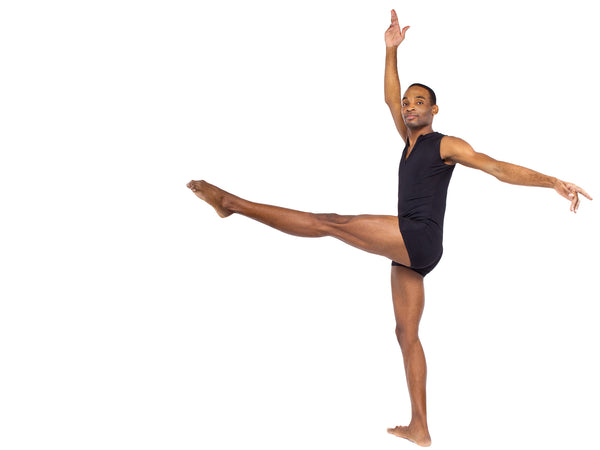
The Problem with Dynamic Stretching
If you were to look for advice on how to stretch, you would most likely stumble upon opinions that say dynamic stretching is the preferred method and static stretching should be avoided. You would also probably come across advocates of AI (Active Isolated) stretching who propose you contract a muscle first to create resistance and then release it. The thinking here being that it’s the release that facilitates the stretch, enabling you to go farther.
But here is the issue: no matter what kind of stretching you do, form has to be considered and practiced because without form, there is no technique, and without technique, results are unlikely. Dancers know this. Athletes know it. And so do artists. Techniques are not only the skills that support learning, but they are also what ultimately improve performance. From lifting weights to yoga practices, form and technique are inextricable from the actions themselves. But, for some reason, stretching has become the exception whereby it’s about placing the body in some kind of position without much thought given to how and/or why.
It’s odd. None of the current - and favored - stretching approaches address this notion of form. They are more theoretical than actual, and while they may make sense cognitively, they don’t physically. This is why so many people assume they were either born inflexible or give up trying when their efforts net little in terms of actual improvement in flexibility.
Dynamic stretching, in particular, claims to be superior to other types of stretching because it relies on movement patterns to extend the muscles (contrary to static stretching which is positional in nature). The theory asserts that the mere act of going through a motion is enough to create a stretch. But it isn’t (and it won’t), not unless you understand your body in a different way. Otherwise, you do end up just going through a motion without much in the way of results to show for it afterwards.
Let me explain. Take this common dynamic stretch. It’s called the Frankenstein Straight Leg Kick. You’ll notice how this woman bends her knees to kick her leg in the air. You will also see her spine dip at the top and round under at the bottom. This shows a collapse, which indicates an inability to control the spine when the legs are moving. While it may seem to be primarily an issue of strength, it is more accurately the combination of stretch and strength, both of which must work together equally in order to stretch and move the leg at the same time.
Imagine a bent knee. Imagine a slouched spine. Is this stretching? No. It's collapsing. It’s bent. It’s actually anti-stretching. Or, think of it another way. From a technical perspective, The Frankenstein Straight Leg Walk should actually look more like a Rockette doing the kicking. I say this because a Rockette (or any other trained dancer/gymnast/skater, etc… is trained to control with strength while moving with flexibility -- like the guy in this picture:

See how his back is long and both legs are straight, and on the working leg, the extension runs all the way to the end of his toes? That's stretching!
So, no matter what type of stretching you choose to do, you can make it work by applying one simple concept, which is to extend through your limbs or spine and lengthen first, and then move. It will develop stretch and strength, the ultimate relationship that dynamic stretching overlooks.
Try this two-second technique to help you loosen up your hamstrings!
I hope you'll join us on Facebook!
Lastics is the only stretching method with transformational techniques that teach you how to significantly & safely improve your flexibility. Born from the world of dance and made for all levels, Lastics Stretch is loved by everyone!
RECENT ARTICLES
-
The Difference Between Stretching and Being Stretched
-
Your Arms Are Your Secret Weapon for Achieving Splits
-
How Often Should I Stretch?
-
Novel Exercises For Hip Pain
-
Fibromyalgia, Oxalates and Unexplained Pain
-
Muscles Present A Curious Dichotomy That Can Inform Your Exercise Routine
-
If You Want to Increase Your Flexibility, Assisted Stretching Won’t Do It
-
Why You Stretch and Don’t Gain Flexibility
-
How Long To Hold A Stretch and It's Not 30 Seconds
-
This Is How To Increase Your Flexibility


Comments
Donna Flagg
October 03 2016
Ha! @Donna ~ That’s wonderful. See? It’s easy once you just shift they way you think about it a little:) Thanks for sharing!
Mimi Quillin
September 27 2016
Good article Donna!
Donna R Hughes
September 27 2016
Good information…thank you. I just tried the Frankenstein walk and really had to concentrate to execute the movement. I then had my husband do it with it telling him about this article and sure enough, his spine collapsed. I then let him read the article and he tried again…successfully.